The Caribbean coast of Costa Rica is a place of epic beauty and diversity. Often overshadowed by major destinations in Costa Rica on the Nicoya Peninsula on the Pacific Coast of Coast Rica; the Caribbean coast of Costa Rica often falls off the places to visit in Costa Rica for many travelers – to their own loss! From Cahuita, to the bustling town of Puerto Viejo, to the sleepy town of Manzanillo just a few kilometers from the Panamanian border, the Caribbean coast of Costa Rica is an area of incredible natural beauty, full of wildlife, and laid-back Caribbean vibes. After having visited; I believe Costa Rica’s Caribbean Coast should be on every Costa Rican itinerary.
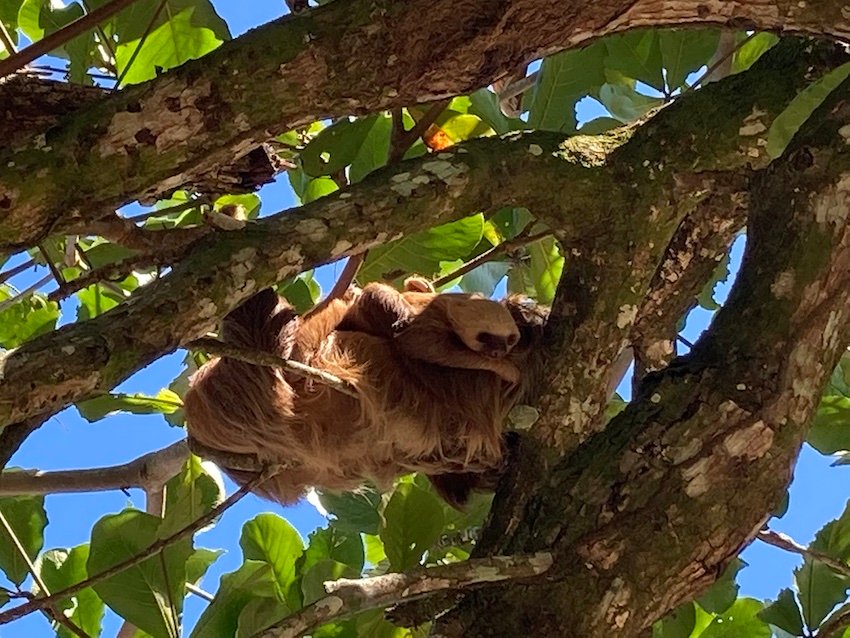
Contents:
- Transportation around the Caribbean Coast of Costa Rica
- Accommodations in Puerto Viejo
- Dining in Puerto Viejo
- Cahuita National Park
- Jaguar Rescue Centre
- Manzanillo National Park
- Beach-hopping in the Costa Rican Caribbean
- Gateway to Panama
- Trip costs for 8 days and 7 nights on the Caribbean Coast of Costa Rica
- Final thoughts on the Caribbean Coast of Costa Rica
This post includes affiliate links. If you make a purchase via one of these links, I may receive a small percentage at no extra cost to you.
Transportation around the Caribbean Coast of Costa Rica:
Daily MEPE direct public buses run from San Jose to Puerto Viejo approximately every two hours from 6am – 6pm and cost approximately $10USD. It takes approximately 4 hours to get from San Jose to Puerto Viejo – and is a very economical option if you’re traveling from San Jose.
If you’re traveling other parts of Costa Rica, almost every public ground transportation option will require a stopover in San Jose before heading to Puerto Viejo. If you’re coming from La Fortuna, Arenal, or San Jose, a unique transportation option you can take would be a one day rafting expedition on the Pacuare river that will pick you up from your accommodations in San Jose, Arenal or La Fortuna, and drop you off at major destinations on the Caribbean Coast of Costa Rica (Cahuita, Puerto Viejo, Manzanillo etc.).
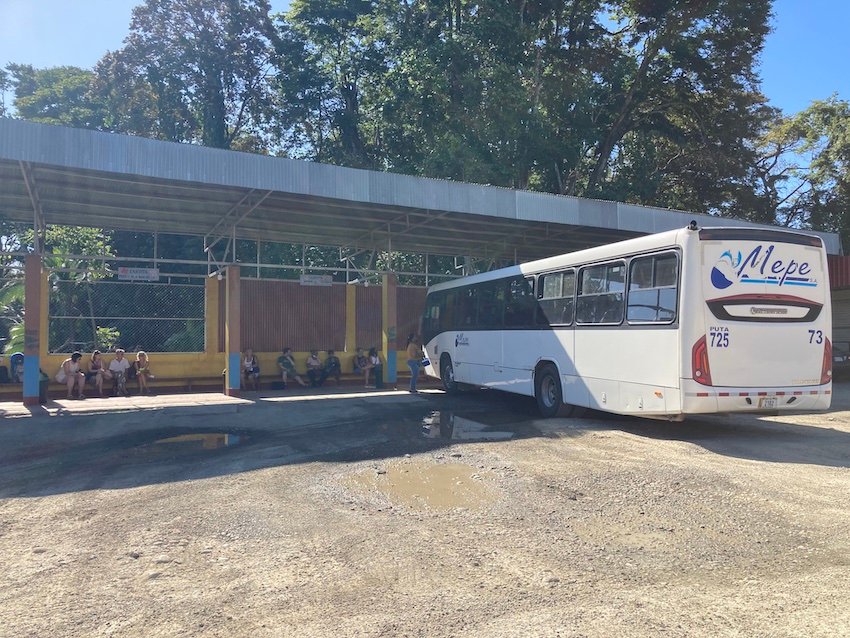

Accommodations in Puerto Viejo:
Puerto Viejo is one of the largest towns on the Caribbean Coast of Costa Rica, and therefore contains the largest number of accommodations options. There are lots of accommodations options within downtown Puerto Viejo itself, but nearby Playa Cocles is also a very popular option for those who want to be a small distance from the hustle and bustle of Puerto Viejo itself, as well as being right on the beach.
After a few weeks of staying in dorms, I ended up booking a private room at Cabinas Popular – which is located in downtown Puerto Viejo just a few blocks from the beach. The rooms were clean and included cable television and strong WIFI. The property is all small apartments with private bathrooms and includes a shared kitchen available for guests to use. The property is fenced and well-lit and I felt very secure staying here. When I made my booking, the pricing for a private room at Cabinas Popular was the same as booking a hostel bed so booking it was a no-brainer!
For shared accommodations, I met travelers who had rave reviews about Kalunai Hostel – which is also conveniently located in the town of Puerto Viejo itself.
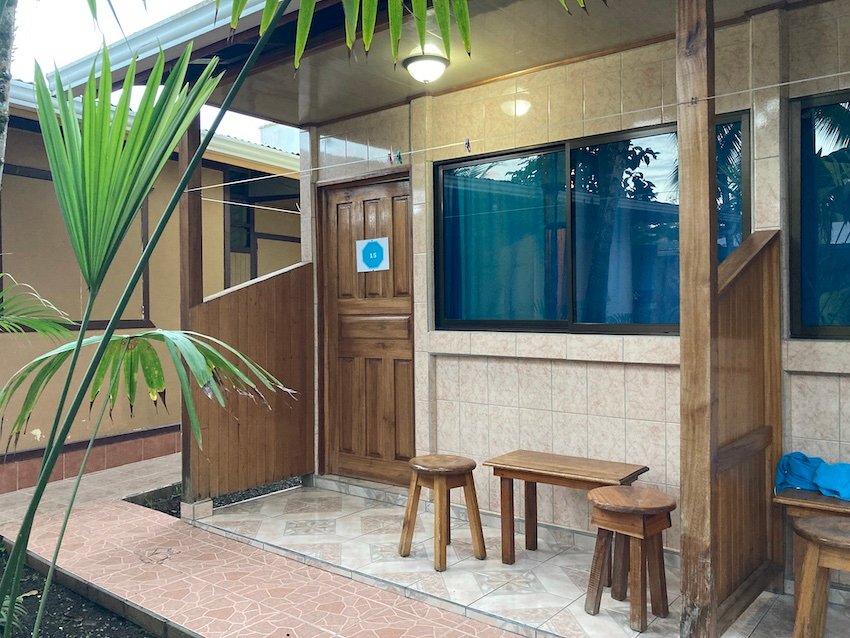

Dining in Puerto Viejo:
El Ranchito is a hidden gem right on the beach in Puerto Viejo. They serve typical casados for 3000 – 5000. For something very authentically Caribbean – try the Rondon – a Caribbean seafood soup typical for the region. An added bonus is that you can bring your own wine to this restaurant (no corkage fee), and enjoy an affordable meal with your own drinks right on the beach!
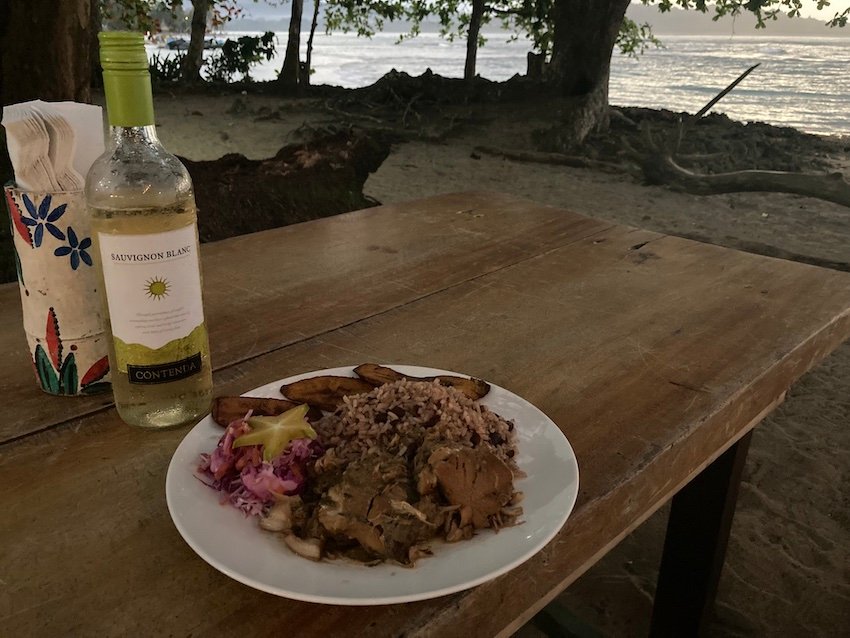
Jammin Vegan Community in Puerto Viejo serves amazing vegan Caribbean food at affordable prices (5000 – 6000 colones per dish). I tried the Seaweed “steak” with yucca fries and was amazed! I don’t know how they made seaweed taste like a delicious Salisbury steak, but they did it, and I loved it.

Tasty Waves cantina is a popular ex-pat hangout right across from Playa Cocles. Large menu, with amazing tacos. Runs weekly trivia and karaoke nights.
La Parada is right beside the main bus terminus in Puerto Viejo, and is a great place to pick up a quick meal if you’re early for your bus (or you just missed your bus). There’s seating by the ocean. A typical breakfast including eggs, gallo pinto and fried plantains will run you about 3000 colones.

Cahuita National Park:
Located next to the sleepy town of Cahuita, Cahuita National Park was one of the highlights of my trip to the Caribbean Coast of Costa Rica. The park features a stunning 8KM trail along the ocean that ranges from white sand beaches, jungle trails and an abundance of wildlife. From Puerto Viejo you can take a public bus (that runs approximately every 30 minutes) from the main bus station (see map) for 880 Colones (approximately $1.50USD) to the main bus station in Cahuita, then walk about 10 minutes to the main entrance of the park. Note that single-use plastics are not allowed in the park.
Entry from the main park entrance in Cahuita is by donation (suggested 1000 colones), but if you enter from the Puerto Vargas entrance, you’ll have to pay an entry fee of $5USD. The 8KM walk along the water around the perimeter of the park is an amazing way to see the park, while taking swimming breaks on the many stunning beaches within the park boundaries. If you’re a single traveller – consider bringing a swim buoy or water wallet to bring your stuff with you when you go swimming, as it’s not advisable to leave valuables on the beach – note that monkeys are known to steal from unattended bags left on the beach. Best footwear would be hiking sandals that you can get wet like Tevas or Chacos. The 8KM trail ends at Puerto Vargas beach where there are washrooms and showers available before you exit the park through a stunning jungle walkway. There is a public bus stop right at the Puerto Vargas gate, where you can take a bus back to Puerto Viejo for 880 Colones ($1.50USD).

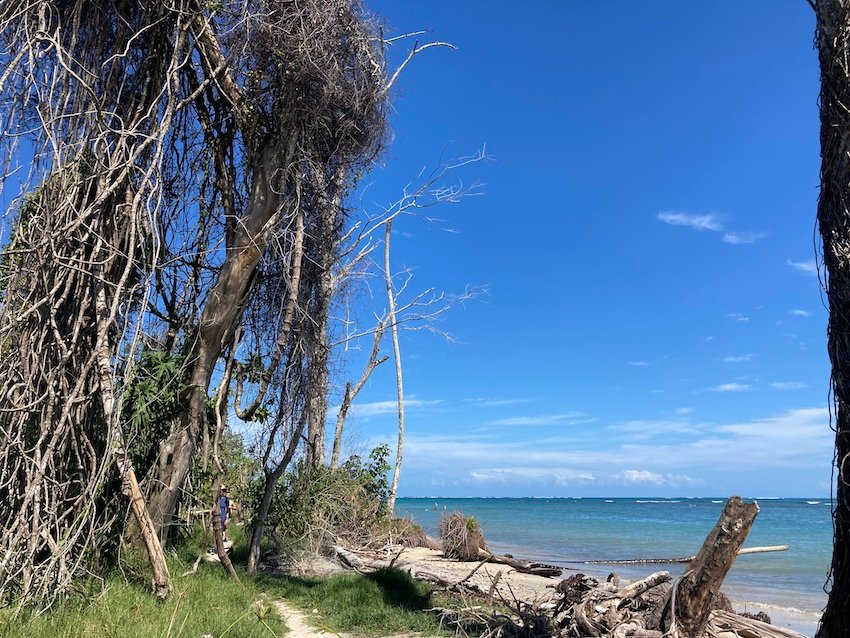
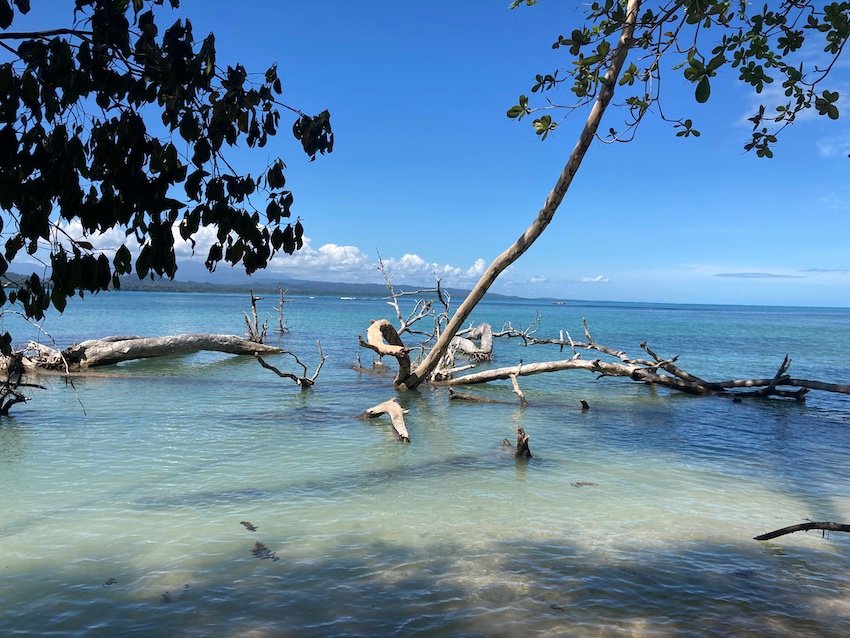

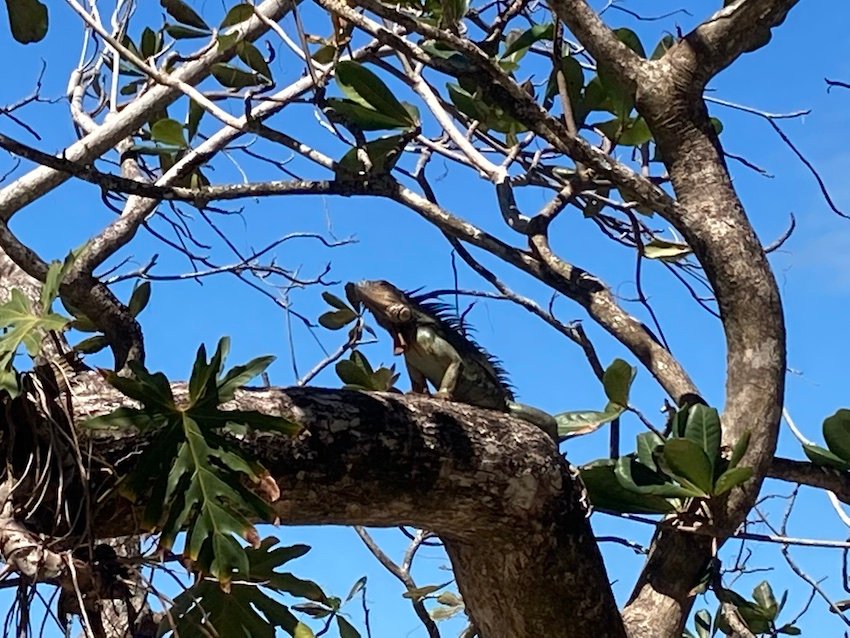
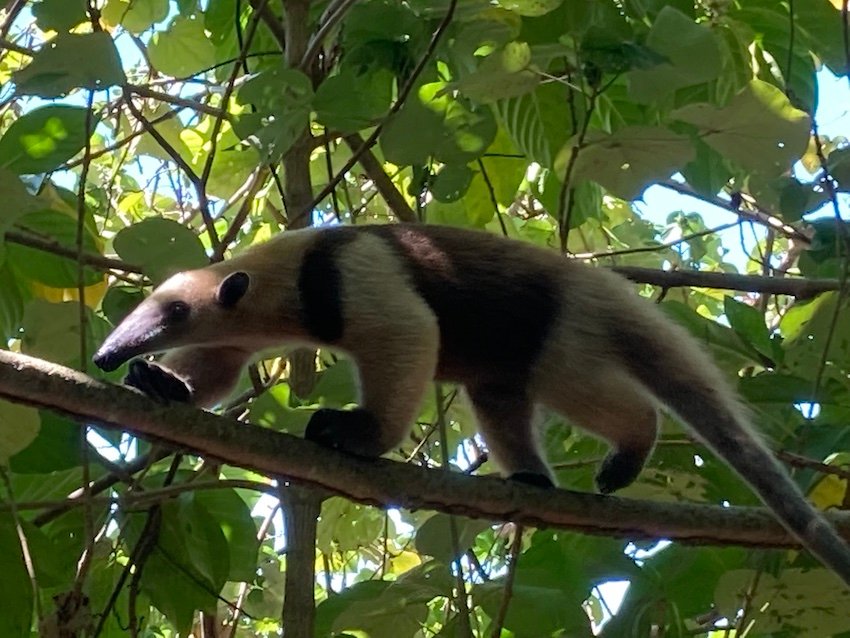
Jaguar Rescue Centre:
The Jaguar Rescue Centre near Playa Cocles (see map) is an amazing place to see some of the wildlife rescued by the centre, up-close, and learn more about Costa Rica’s wildlife. Founded by two Zoologists who used to work together at the Barcelona Zoo, the Jaguar Rescue Centre has been saving, rehabilitating, and caring for injured animals brought to the centre since 2008. Their goal is always to release animals back into the wild, but if animals are deemed non-releasable (ie: too humanized), they often become permanent residents of the rescue centre where visitors can learn more about them. The centre is run entirely on donations and from visitor entrance fees ($22USD). Your entrance ticket gets you a 1.5 hour guided tour of the centre. Tours are available in a variety of different languages including English, Spanish and French. Tours are available two times a day – one at 9:30am, and another at 11:30am. Arrive 10-15 minutes ahead of time to buy your ticket.
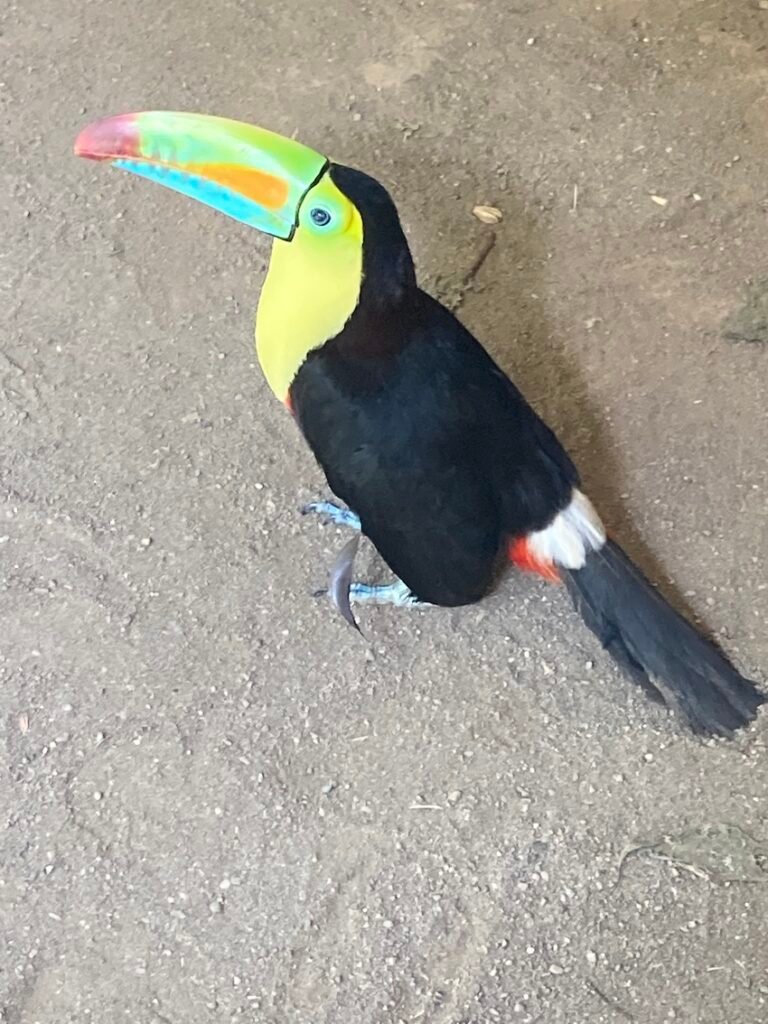
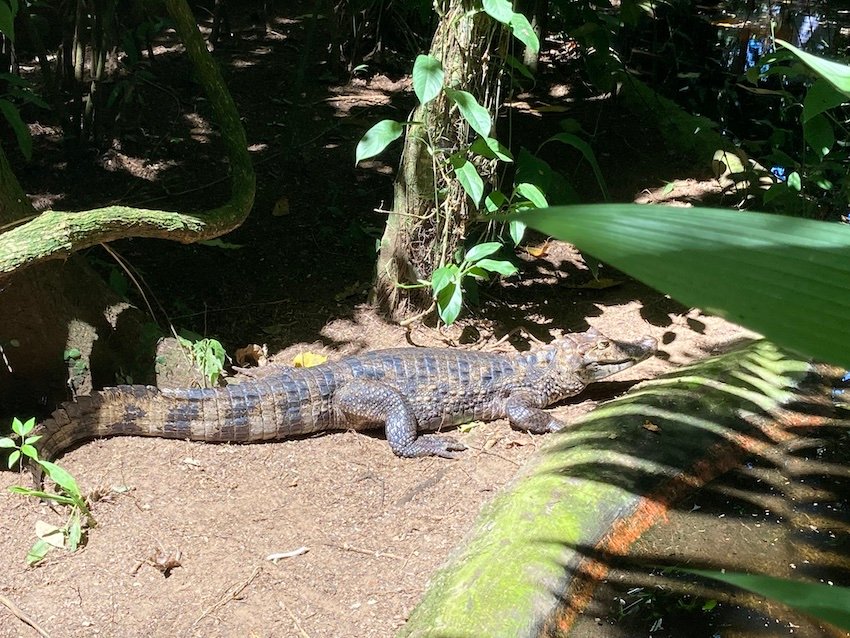

Manzanillo National Wildlife Refuge:
Created in 1986 the Manzanillo National Wildlife Refuge protects a large land and marine area in Costa Rica near the Panamanian border. The refuge contains 10 kilometers of beach, 740 acres of forest, a coral reef and 2 swamps – including the only intact mangrove swamp in the Atlantic. As the nesting area a number of species such as manatees, crocodiles, caimans, dolphins, and turtles; the refuge serves as an important conservation area for the protection of endangered species such as the leatherback turtle. The town of Manzanillo, which is one of the more easily accessible access points for the refuge, is actually located within the refuge itself. A public bus from Puerto Viejo will take you to the bus terminus in the town of Manzanillo where you can walk 10 minutes along the dirt road that runs along the ocean to the entrance of the refuge. Entrance is by donation (suggested 1000 Colones). Note: single-use plastics are not allowed in the park.
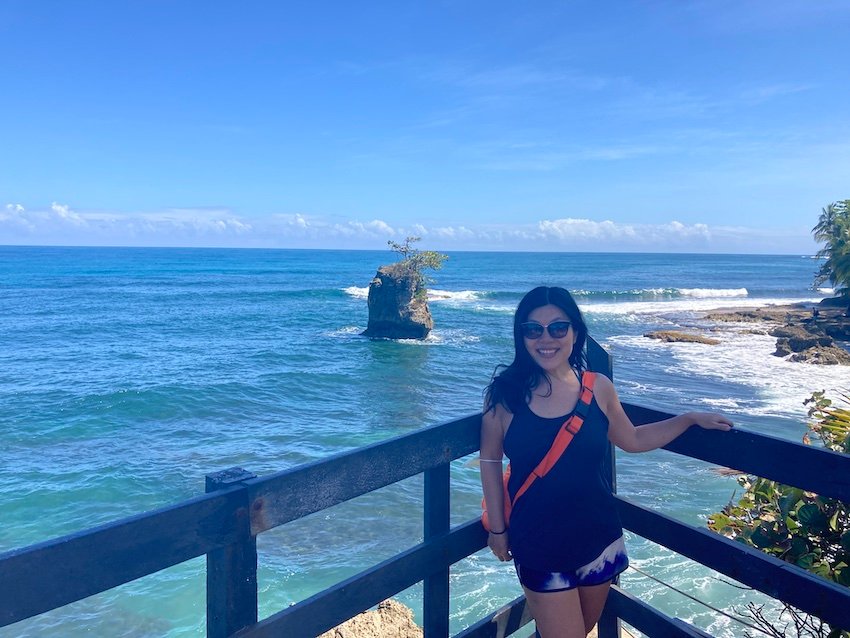


Beach-hopping on the Caribbean Coast of Costa Rica:
The Caribbean Coast of Costa Rica is a treasure trove of beaches all within easy transport distance to each other. There is Playa Negro in Puerto Viejo itself, and just a short 2KM walk away from the hustle and bustle of Puerto Viejo is Playa Cocles – which is the major surf destination for the area. You can rent surfboards for $15USD a day from Tico’s Surf and Skate just across the asphalt road from Playa Cocles (see map), or various surf rental shops on the beach will rent a board to you for $5 and hour, or $20USD a day.
It is actually possible to walk from Puerto Viejo along an oceanside trail and beach all the way to Manzanillo. One you pass Playa Cocles, you reach Playa Chiquita – which is a lovely little beach that is small without many vendors or services. A further walk east, will bring you to Punta Uva beach which is a busier spot with shops and services. A hike to Punta Uva reveals a beautiful lookout over the ocean and surrounding areas. There is a lovely shallow snorkelling area with some interesting tide pools at Punta Uva (see map) If you like long beach walks, you can walk from Puerto Viejo to Manzanillo (approximately 13KM), and take the bus back to Puerto Viejo (and vice versa) – just avoid being on the beach once it gets dark for safety reasons.
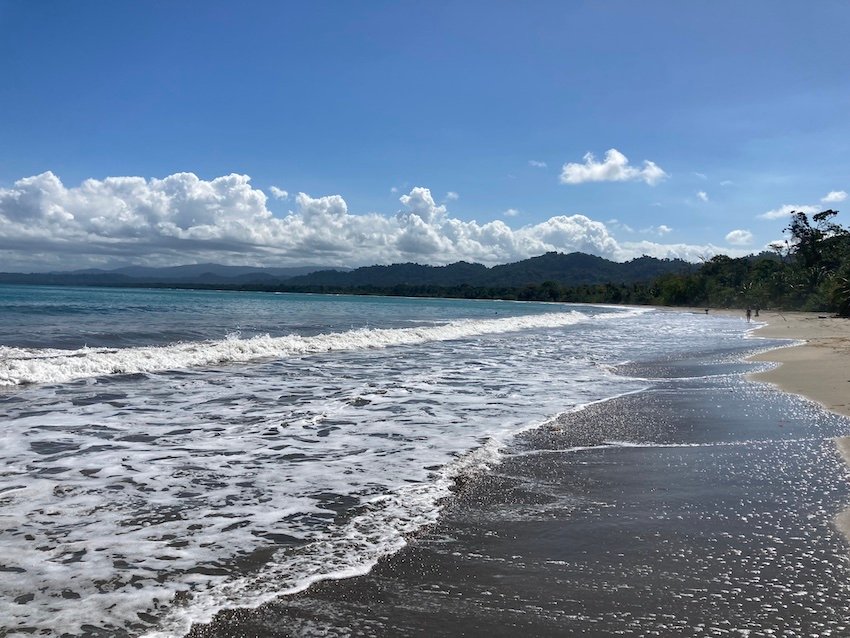

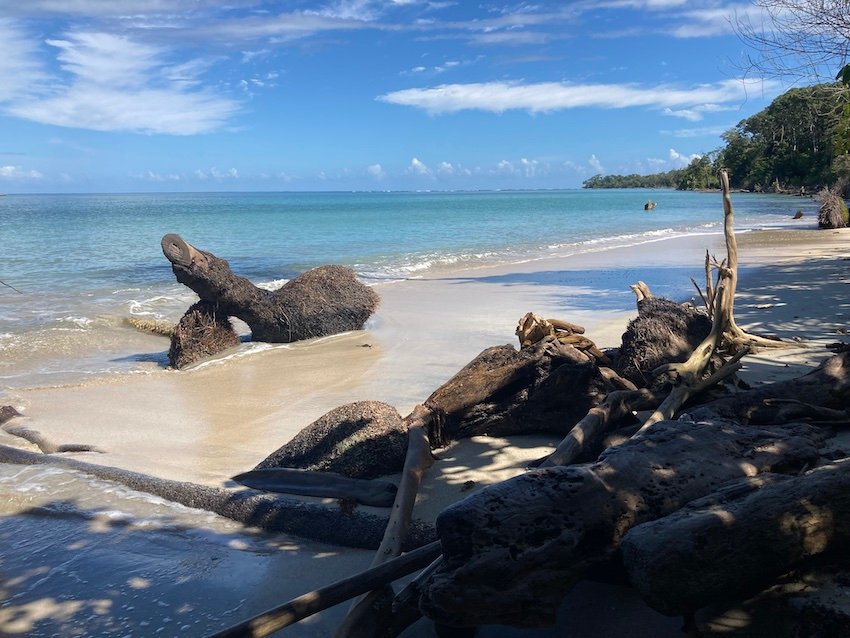
Gateway to Panama:
Puerto Viejo is about an hour away from the Panamanian border, and is a convenient gateway to Bocas del Toro, on the Caribbean Coast of Panama. You can take a public bus from Puerto Viejo all the way to Sixaola at the Costa Rican/Panamanian border for less than $2USD. Out of laziness, I chose the Puerto Viejo to Bocas del Toro shuttle service offered by Caribe Shuttle. The shuttle is approximately $35USD, and walks you through every stage of the border crossing process. Given the intricacies of crossing the Costa Rican/Panamanian border, I would highly recommend the shuttle service (more on this in my next post).

Trip costs for 8 days and 7 nights on the Caribbean Coast of Costa Rica:
Accommodations: $136.31USD
Transportation: $4.62USD
Shuttle to Bocas Del Toro: $35USD
Groceries: $39.79USD
Dining: $38.23USD
Park entry fees/donations: $6.25USD
Jaguar Rescue Centre entry: $22USD
Surfboard rental: $10USD
Costa Rican exit tax: $9USD
Total: $301.20USD
Final thoughts on the Caribbean Coast of Costa Rica:
The Caribbean Coast of Costa Rica is a kaleidoscope of everything Costa Rica has to offer – from incredible beaches with black sand, golden sand, and Caribbean white sand – to an incredible biodiversity of flora and fauna. The surfing here rivals that of the fabled Pacific coast, and there are also opportunities to visit indigenous groups such as the BriBri. The Caribbean Coast is also a lot less expensive than elsewhere in Costa Rica, and park entries to some of the best parks I have visited in Costa Rica – such as Cahuita National Park – are just by donation.

Safety is something to keep in mind when visiting the Caribbean Coast of Costa Rica. Women, particularly single women travelers, should avoid walking alone at night or in the early mornings when there are not a lot of people around. All travelers should exercise caution when attending parties and events. To avoid potential dangers associated with taking taxis and tuktuks in the area, always have your accommodations call you a taxi or tuktuk so that they know who the driver is. Uber is available, but cell service can be spotty at times, and driver availability can be scarce. If you find yourself away from your accommodations without cell signal, and need a taxi or a tuktuk, find the nearest hotel, hostel or restaurant, and they should be able to help you call a trusted taxi or tuktuk.

Despite some of the safety concerns I had visiting the Caribbean coast of Costa Rica; I had an amazing time. I relished the postcard-worthy scenes I got to see every day; and was amazed by the unbelievable number of animals I saw just walking the beach trails in the area. The diversity of flora and fauna on the Caribbean Coast is just as incredible as that of anywhere else in Costa Rica, and it’s also more affordable too. I would recommend all travellers make a trip to to the Caribbean Coast of Costa Rica, to experience “Pura Vida” Caribbean-style.
Next stop: Bocas del Toro, Panama


Glad you’re having so many cool experiences!
Thanks so much Silvia!! It’s been AMAZING 😀